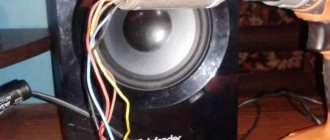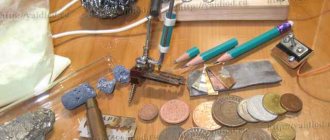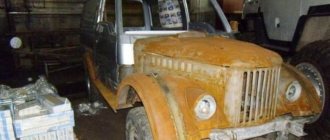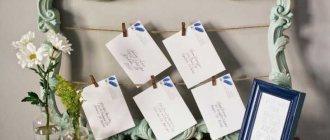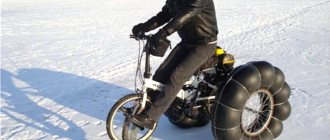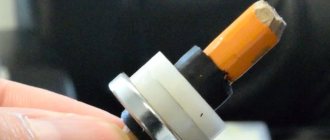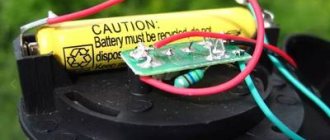Andrey Onishchuk, a software engineer from Minsk, decided to give his son Ivan a children's electric car for his birthday a year and a half ago. But those options that were on sale in Belarus, Russia and even China did not suit Andrei - the power reserve is small, there is no similarity with real samples, and the quality of the materials from which the cars are made leaves much to be desired.
There were thoughts of making our own based on such a serial electric car. But after a detailed study, it turned out that the electrical part was cheap and of poor quality and did not satisfy the engineer’s needs. It was then that Andrei, together with his son Ivan, decided to create a car himself, fortunately there were enough specialized sites for like-minded people. Three months later, the scaled-down Willys MB electric car was ready.
“I started with the wheels, and adjusted the rest to fit them”
Andrey, an experienced software engineer, began creating a gift for his son by thinking through the concept, doing a lot of calculations and drawing a 3D model. The decision on the principle of operation - to install a gasoline or electric motor - turned out to be serious. As a result, the master settled on the second option. After all, this is a children's car, not a go-kart or an ATV. And it was most often planned to be used in cultural and recreation parks. What kind of gasoline can we talk about in such places?
It took Andrey only five days to design the body of the future model in a computer program. “It was the simplest thing,” the engineer is sure. But it took about three weeks to draw the frame, steering linkage, rear axle, drive and other parts. And before that there are two more weeks to purchase the necessary components. At that time, the project was already in the engineer’s head.
“Because of such a rush, it turned out that I bought a lot of unnecessary parts,” the man recalls. — Because you keep one thing in mind, then you buy spare parts for it, and then another, better solution comes. And you start all over again. This can go on indefinitely, the main thing is to stop in time. The hardest thing was to find wheels that matched the diameter and tread pattern. I found similar ones in a regular hardware store. That's what they were called - wheels from agricultural machinery. I don’t know where they were used, but at that time they suited me perfectly. The frame and body were created to suit the size of these wheels. In fact, because of the wheels, the scale of the car turned out to be one to two. This is a very large size for a children's toy.
In between his main work, Andrey Onishchuk welded the frame and made steering bipods. All parts and components are almost exactly copied from real cars. To create the body, the engineer used waterproof 12-mm plywood, cut it with a waterjet - a jet of water under high pressure, and painted it with regular automotive paint. And after all the diagrams and drawings were ready, and spare parts were purchased, work began on turning the idea into reality.
— I tried to prepare every detail as much as possible in order to assemble the car in the shortest possible time. And so it happened - the body and frame with the mechanical part were assembled in one day. With smoke breaks and a lunch break. At some point, the thought arose that problems might arise during assembly, since each part was made individually without being adjusted locally. But it turned out great - all the details came together down to the millimeter. Computer-aided design is a thing!
The children's car began to look like a real Willys. And although the electrical part had not yet been installed, Vanya conducted the first test drive that same evening. Instead of an engine, traction was provided by the muscular strength of Andrey's father.
Now the car is driven by two 36V 350W engines, the maximum speed is about 12 kilometers per hour. The rear shaft is split, ensuring independent rotation of the wheels. In fact, this is a copy of the center differential of all-wheel drive SUVs. There is also a toggle switch for blocking it. The electric motors are connected to the controller in series, thereby implementing the differential principle, and using the above-mentioned toggle switch they can be connected in parallel, resulting in a “locking”. The car also has remote “parental control” in the form of a key fob so that you can turn off the power at a distance of up to 50 meters. The power source is four batteries from an uninterruptible power supply unit. You can charge them without removing the batteries from the car, using a converted connector from the computer power supply - so as not to reverse the polarity.
The car is also equipped with LED headlights, side lights, there are even working turn signals, hazard lights and brake lights. And when reversing, in addition to the reversing light coming on, an audible buzzer sounds.
MINI-JEEP: PULL, NOT PUSH!
The removable part of the body also has a tubular frame with plywood sidewalls. However, using this technology it is impossible to mold the roof skin, which is a double-curvature surface. To create a shell of this shape, amateur car designers, as a rule, use blanks or matrices, the creation of which is a very, very labor-intensive task (this technology is most often used in the manufacture of a small series of several cars). To glue a single roof, it makes sense to use a simplified technology for manufacturing convex surfaces, which was once mentioned in the “Modelist-Constructor” magazine. I will briefly repeat some stages of this interesting technology.
After welding the frame of the removable part of the body, its upper frame - the one that is the perimeter of the roof - is covered with plastic film and secured to the frame with adhesive tape. Next, the frame is turned over, and small pieces of fiberglass impregnated with an epoxy binder are laid out over the film. The laying should begin from the conditional center of the roof panel and lead to the periphery, pressing the glued area with a piece of polyethylene film, and on top of it - a pile of dry river sand. In this case, it is necessary to constantly control the curvature of the roof surface, determined by gravity and the elasticity of the plastic film, achieving redistribution of the sand along gluing surfaces to obtain the shell of the desired shape. After the epoxy glue has cured, the film is removed and the roof is ready. All that remains is to paint it. If necessary (if the roof is not rigid enough), the shell is reinforced with a stringer made of a wooden strip with a cross-section of 20×20 mm glued from the inside of the body.
The sides of the removable part of the body are sewn up with plywood in the same way as it was done on its main part - using countersunk screws. The doors also have a tubular frame and plywood skin.
The inside of the body is covered with packaging or construction foam, and then covered with artificial leather. The doors are also filled with foam on the inside and then covered with 3 mm plywood and artificial leather.
All three car seats are homemade, welded from steel pipes with a diameter of 20 mm. The frame is covered with rubber tape cut from an old truck inner tube, foam is glued over the tape, and then the cushions are covered with faux leather. The right front (passenger) seat is secured so that it can be folded forward to seat passengers on the rear sofa.
The control system is automotive type. The steering is SZD type, the brakes are also motorized, hydraulic, with drive on all four wheels. To the right of the driver there are two handles mounted - the gearbox switch and the reverse gear. The drive from them to the corresponding units is using rigid rods. A rigid rod also connects the clutch release pedal to the corresponding mechanism. The carburetor throttle drive is a combined one: a rigid rod and a cable in a Bowden sheath.
The electrical equipment of the Elf is made according to the type of SZD motorized stroller. The headlights are from a “Tulitsa” scooter, the front sidelights (“turn signals”) are from an IZH motorcycle, the rear “dimensions” together with “turn signals” and brake lights are from an old truck. As it turned out, this set of lighting fixtures quite matches the appearance of the prototype of my mini-jeep, the Jeep.
Igor KARAMYSHEV, engineer
We recommend reading
- SILVER TEAPOTS Every day we use a huge number of things and have almost stopped noticing them. But it turns out that in the production of seemingly insignificant things there is a lot hidden...
- Aviation models - features of creation Each aircraft model represents painstaking work by the designer, as well as many hours of assembly training. Creating and gluing an aircraft model, as a rule, requires a lot of time and...
“The neighbors thought I decided to save money”
“Relatives and friends had mixed feelings about the idea of creating a children’s electric car,” recalls the father-designer. — There were even such opinions: I decided to save money and make a wooden one instead of a good factory machine. I just smiled back at them. In total, $1,200 was spent on the production of the mini-Willys. This is only the cost of parts and materials. What savings can we talk about? But I didn’t think about the final cost then; contact with the child during the work process was important to me. Four-year-old Ivan’s interest in the history of Victory’s military equipment and passion are much more important than finances.
After the car was ready, trips were planned to take it to the parks of the capital. The premiere of the homemade Willys MB was supposed to take place on May 9 last year. But Vanya got sick, and the car was left to wait in his father-in-law’s garage.
“We were very upset then,” Andrey recalls. — The front-line military uniform was custom-made for Vanechka. And then there’s otitis media. But then we felt the support of complete strangers, members of the forum. At that time, I had already created a thread about this car on a specialized forum, where I talked about each stage of creation. And then I started receiving messages, people were sorry that we wouldn’t be at the holiday and we wouldn’t be able to see each other. Therefore, we decided at all costs to come to the Sports Palace in Minsk on this Willys on July 3, when Independence Day was celebrated.
But even here the first disappointments awaited. Andrei, Ivan and their Willys did not want to be allowed into the center of the city to the site where the celebration was taking place by the police. They twisted and turned the car from all sides, admired it, but no one dared to decide to let them pass...
“There was no turning back—I made a promise to my son that we’d go for a drive during the holiday.” Therefore, I began to act more decisively. I asked to invite the senior police officer or to take me to him. We must give credit to those guys, they invited their commander. He also carefully studied everything, asked to demonstrate the car in motion to make sure that all the parts were working and did not pose any danger to others, and allowed us a pass to the holiday. And at the holiday, virtual acquaintances were already waiting for us, and other people came up. Everyone admired the car, and Vanya proudly told the children (and adults) about his car.
Although there were some incidents. For example, traffic police inspectors, seeing a car on the site, jokingly recommended that it undergo a technical inspection and pay insurance. They said that it’s not a shame to let one like this out on public roads. And the kids were breaking away from their grandmothers or mothers and running to the Onischuks’ car. And the accompanying people grabbed the kids by the hands and took them away from the electric car.
— They thought that we would ask them for money for a photo near Willys or for riding on it. But we immediately explained: everything is free! Take photos, ride for fun - it’s a holiday! There was no end to the children, and Vanya made so many friends right away! But the happy eyes of my son are the highest appreciation of my work. So it’s not in vain that we did this. Along with him, by the way, he is my assistant!
The famous Willys, made by hand
Today is a publication about a not quite ordinary car, or rather a completely unusual one.
The Willys MB became a legendary car not only for the American army. The author of the publication recreated it himself from practically nothing. So much so that now the car participates in retro events and many cannot distinguish it from the original. As the owner himself says, I wanted to create, but I had neither the means nor the strength to do so. But at one point. At a time when all cars were Soviet
I grew up and was brought up at a time when a car was still a luxury, and not a means of transportation. Although in the 1980s we had enough people who could easily buy, for example, a Volga (GAZ-24) for 16 thousand rubles, although the average salary then was somewhere around 150-180 rubles. This is for the workers. I consider myself a worker, and that’s why my first car back in 1990 was a Moskvich-408, with a huge box of parts and spare parts. But when I stuck the engine from the 412 into it, it ran smoothly and even, in some ways, quickly.
Then there were Zhiguli cars, and then all sorts of cheap, not in the best possible shape, foreign cars. What I'm getting at is that I did all types of repairs myself, learning something step by step, in most cases from my own mistakes.
At that time, the program “You Can Do It” was broadcast across the country (I think that’s what it was called, although I could be wrong). The point is that they showed cars there. Beautiful and not so beautiful, different. But they all had one thing in common - they were homemade, not like everyone else. In a word, they were different! They were like foreign cars, like the cars of the future, and were built by ordinary people, in garages, barns, and some even in apartments. As they say now, “on the knee.” So, to everything that has been said, I want to add one thing: apparently, somewhere around that time I became ill with all this. I wanted to create, wow, how I wanted to.
It didn’t work out due to the circumstances of that time. But somewhere in the year 2004, I started trying, in the sense of simply turning, cooking, drawing, sawing and cooking again in any free time from work, until something got on wheels and drove. But it turned out, in my opinion, terrible.
Source
